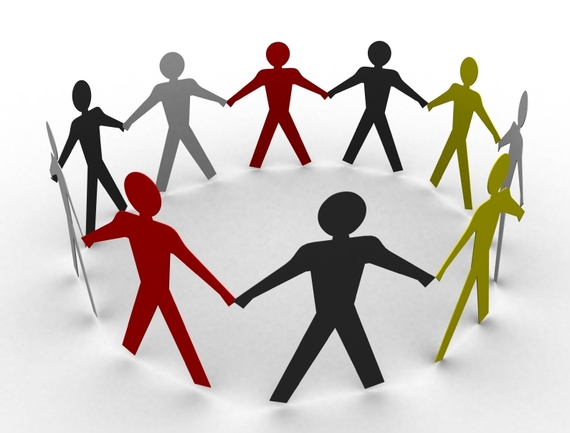
by Rod Collins, Director of Innovation at Optimity Advisors
What are your organization's most important assets? What is your company's primary means for creating value? What defines the true valuation of your enterprise? If you were to look at your business's financial statements, you might assume it's the value of your plant, property, and equipment. After all, what would happen to your company if, all of a sudden, your physical assets were totally destroyed--vanished and gone forever? How would your organization survive? Would you suddenly be forced out of business? While these might seem like hypothetical questions, they were very real circumstances for one company that was dramatically confronted by the unthinkable on September 11, 2001.
The corporate headquarters of Empire Blue Cross Blue Shield was located in the north tower of the World Trade Center. While nine of its employees and two consultants lost their lives on that tragic day, over 1,900 workers survived the terrorist attacks. Empire lost over 250 computer servers, over 2,000 desktop computers, and over 480,000 square feet of office space when the north tower collapsed. In a single instant, Empire had lost its headquarters facility and all of its equipment. Yet remarkably within three days Empire was fully operational. While the company had lost its machines, Empire was fortunate that almost all of its workers survived and its data had been backed up to another site on a regular basis. With its people safe and its data secured, Empire had the essentials it needed to be quickly back in business. Within in a matter of hours, the company was able to locate alternative facilities and make the computer hardware arrangements to once again begin processing health insurance claims.
An Important Lesson
The New York state examiner's report on the recovery efforts of Empire Blue Cross Blue Shield cited three contributing factors for the company's very effective response to the terrorist disaster. First, Empire's disaster recovery plan, especially its regular back up of electronic data, securely preserved the company's critical business information. Second, Empire's continuous quality improvement program created a business environment where all employees understood the operations of the whole company and were aware of how their individual functions impacted other departments and the company as a whole. As a result, despite the catastrophic disruption of their working arrangements, when the employees began reporting to their temporary locations, they understood the specific effects of the disaster and what needed to be done. But perhaps, most importantly, the continuous quality improvement program encouraged employees to act independently and move projects to completion. This proved to be crucial on September 11th between 8:46 a.m. when the first plane crashed into the north tower and 10:28 a.m. when the tower collapsed.
Despite the chaos and confusion in those first moments after the attack, middle managers at other Empire locations did not hesitate to make critical decisions when they were unable to contact senior management. Their quick thinking and their bold initiative in making important decisions that were usually beyond their normal authority were essential contributions to the data preservation that enabled Empire's resilience.
The important lesson we learn from the Empire story is that, for many twenty-first century businesses, their most critical assets are their data and their people. When yours is essentially a software business, as many--if not most--companies are today, you can literally lose your physical assets and still remain in business. However, if you lose your knowledge assets--your people and your data--you may find yourselves in an unrecoverable situation.
New World and New Rules
In the fifteen years since the events of September 11th, the technology revolution has accelerated both the capacity and the productivity of knowledge assets. In that time we have witnessed the emergence of Wikipedia and Google as the primary information tools of everyday people as well as the birth of Facebook, Twitter, LinkedIn and the rest of the social media movement. At the heart of this revolution is the unprecedented networking of the world's people and their data.
We now suddenly find ourselves in a new world with new rules--a highly hyper-connected world--where for the first time in human history, mass collaboration is not just possible, but highly practical and pervasive. In this short period of time, the fundamental way we structure the world has suddenly shifted from top-down hierarchies to peer-to-peer networks, and in the process we have discovered how to tap into the highest form of human intelligence: our collective intelligence.
Google is, for most people, their first practical experience of mass collaboration. With their innovative search engine, Larry Page and Sergey Brin introduced the world to the first large scale application of collective intelligence, but more importantly, they convincingly demonstrated the superiority of collaborative peer-to-peer networks over bureaucratic top-down hierarchies as vehicles for producing extraordinary business results.
Mass collaboration is creating entirely new ways of working together that only twenty years ago would have stretched the limits of believability. Who would have imaged that you could build a productive enterprise using only volunteers working without a plan, without assigned tasks, and even without pay? Yet today, Wikipedia, another enterprise that leverages collective intelligence, is the world's most widely used reference work and has completely displaced a two-century business model in a single decade
Paradigm Shift
The innovative architecture of Wikipedia and Google are examples of how the Digital Revolution has spawned a paradigm shift in the fundamental architecture for the ways we prospect data and the ways we organize people. If, as we learn from the Empire story, the knowledge streams inherent in a company's data and its people are their most important assets, then competitive advantage in twenty-first century business will belong to those who can best aggregate and leverage the collective intelligence distributed throughout their organizations and within their information systems.
In a rapidly changing world, the more voices you can get into the same space at the same time, the better the intelligence and the faster you can transform that knowledge into execution--provided that you have workable collective learning processes. Innovative collective intelligence platforms are furnishing an unprecedented capacity for organizations to leverage the power of people and data to solve complex problems far faster than they ever imagined possible, as was discovered recently in the health research scientific community.
The Extraordinary Power of Collective Intelligence
In the summer of 2011, Firas Khatib, a biochemist at the University of Washington, felt something needed to be done to accelerate the progress of solving a molecular puzzle that had stumped the world's best scientists for more than a decade. The evasive puzzle involved figuring out the detailed molecular structure of a protein-cutting enzyme from an AIDS-like virus found in monkeys. Because this enzyme plays an important role in the spread of the virus, Khatib knew that figuring out its structure could be the breakthrough needed to arrest the medical malady. That's when Khatib turned to Foldit.
Foldit is a collaborative online video game developed by the University of Washington that enlists players worldwide to solve difficult protein-structure problems. There are no special requirements for joining the Foldit community. All comers are welcome, which explains why most of the more than 235,000 Foldit players have little or no background in biochemistry. Khatib recognized that the molecular challenge was a good fit for the capabilities of the Foldit game. Incredibly, what had evaded the world's best individual scientific experts for ten years was solved by collective knowledge of a diverse group of online gamers within only ten days. When you have the capability to aggregate and leverage collective intelligence and to turn that knowledge into extraordinary results, you discover that that your organization's most important assets are indeed its people and its data.
Rod Collins (@collinsrod) is the Director of Innovation at Optimity Advisors and the author of Wiki Management: A Revolutionary New Model for a Rapidly Changing and Collaborative World (AMACOM Books). He writes for this column on the first Thursday of each month.
